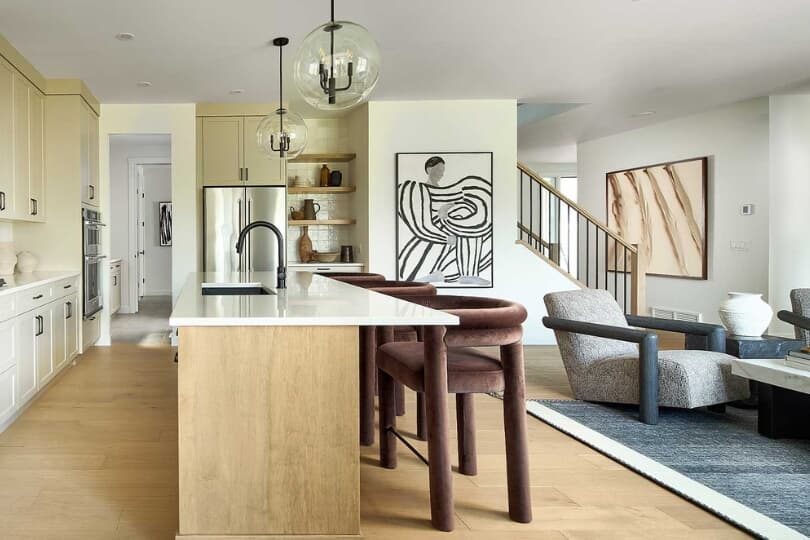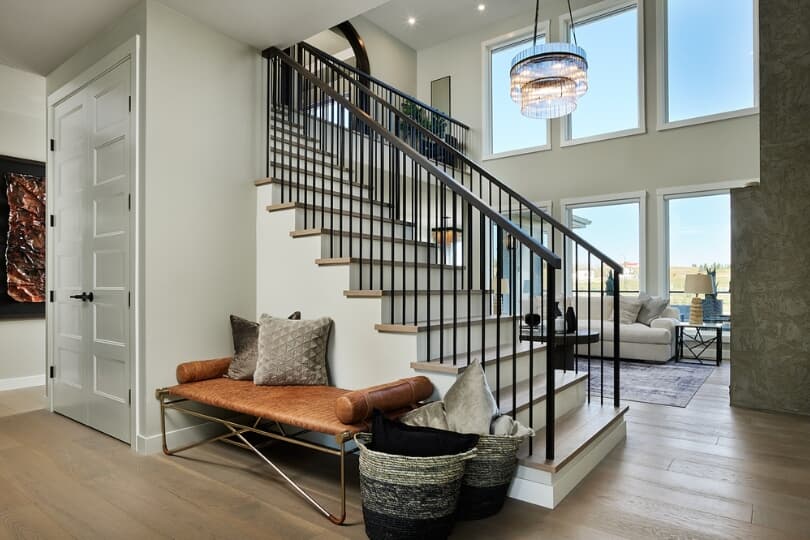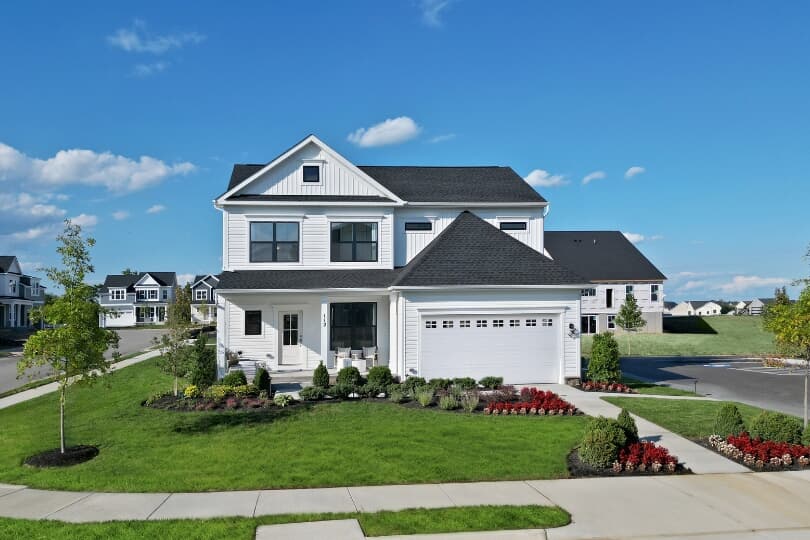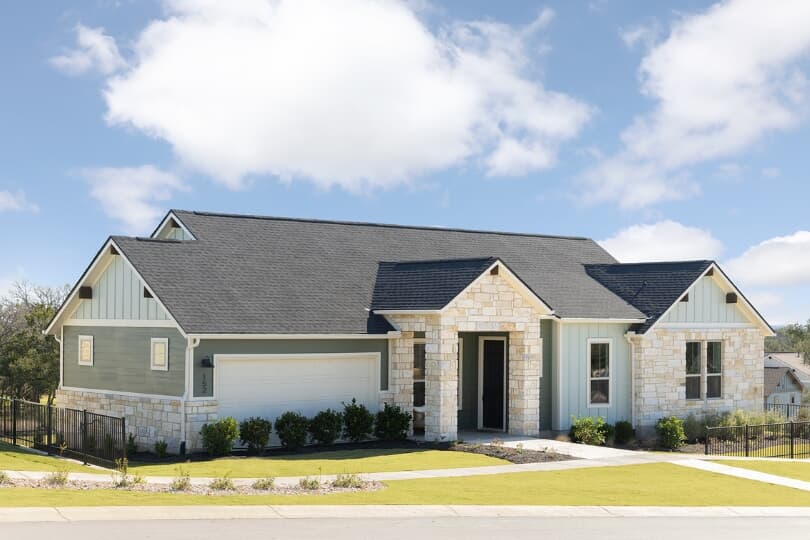One-story vs Two-story Homes: What to Consider Before You Buy
Thinking about buying a new home? The decision between a one-story vs two-story house isn’t just about aesthetics—it can impact your comfort, safety, and daily routine for years to come.

Choosing between a one-story or two-story house comes down to what works best for your lifestyle. Do you have small children and already feel exhausted just thinking about running up and down the stairs all day? Or do you love the idea of extra privacy with separate levels? Each option has its perks, and we’re here to help you weigh the key factors and find the best fit for you.
Layout and Space

Matera 36 Floor Plan, Estate Collection, Livingston Community, Calgary, Alberta
When deciding between a one-story or two-story house, the layout and space you choose will play a big role in how you enjoy your home. One-story homes bring everything to one level, creating a smooth, open flow that’s perfect for easy living.
Two-story homes, with separate levels for living and sleeping areas, offer more privacy, making them ideal if you prefer some separation between personal and communal spaces. Whether you lean toward a one-story or two-story house, both options have their own charm, depending on how you use your space and what suits your daily life.
Accessibility and Ease of Living

Palermo Floor Plan, Estate Collection, Rockland Park, Calgary, Alberta
When choosing between a one-story or two-story house, it's important to consider the needs of everyone in your household. One of the biggest factors in a two-story home? Stairs. Are you unfazed by the idea of climbing them daily, or does it feel like a dealbreaker?
Think about mobility and safety—stairs can pose challenges for young children, older adults, or anyone with limited mobility. Carrying laundry baskets up and down or making multiple trips to grab forgotten items might become tiresome. On the flip side, stairs can offer a natural division between living and sleeping areas, creating that sense of privacy and separation that some may prefer.
The key is to reflect on how stairs might shape your day-to-day life. Will they add an extra layer of hassle, or will the separation of spaces feel like a welcomed feature? Understanding how your household functions will help you decide which floor plan layout best supports your comfort and ease of living.
Privacy and Noise Control

Artisan Four Floor Plan, Artisan Portfolio, Barefoot Lakes Community, Firestone, Colorado
Finding the right balance between privacy and noise control can make all the difference in how comfortable your home feels. In a one-story home, bedrooms are often closer to main living spaces, which can mean more noise carrying through. If you have a lively household, this might be something to consider—especially if you’re trying to create a peaceful retreat for sleeping or working.
With a two-story home, you gain an extra layer of separation since the bedrooms are typically upstairs, away from the main gathering areas. This can be a great advantage if you have small children who need quiet for naps or bedtime, or if you simply enjoy having a little extra space between the hustle and bustle of daily life and your personal sanctuary.
Think about your family’s lifestyle—do you need a quiet escape from a busy household, or does having everything on one level feel more convenient and connected? Finding the right balance between privacy and togetherness will help you decide whether a one-story vs. two-story house works best for your home.
Outdoor Space and Lot Size

How important is outdoor space to you? The size of your yard can be impacted by whether you choose a one-story or two-story house. Since one-story homes require a larger footprint, they often take up more of the lot, which can mean sacrificing yard space unless you have a larger lot to accommodate both the house and outdoor area.
Two-story homes, on the other hand, build upward rather than outward, allowing for more square footage inside while preserving more outdoor space. This means you can enjoy a spacious backyard without needing a larger lot, giving you room for a garden, patio, or play area without compromising on home size.
If having plenty of outdoor space for entertaining, gardening, or simply relaxing is a priority, a two-story home may offer more flexibility. However, if you prefer the convenience of single-level living and don’t mind a slightly smaller yard, a one-story home could still meet your needs.
Maintenance and Upkeep

Sheridan II Floor Plan, Single Family Collection, Snowden Bridge Community, Stephenson, Virginia
Love the idea of low-maintenance living? The number of stories in your home plays a big role. A one-story home makes everyday upkeep a little easier—whether it’s cleaning windows, clearing gutters, or tackling roof repairs, everything is more accessible. No need for tall ladders or extra hassle—just simple, straightforward maintenance.
With a two-story home, you get more space without taking up as much land, but exterior maintenance can take a little more effort. Washing second-story windows, fixing the roof, or painting the exterior often requires specialized equipment or hiring a professional. However, because a two-story home has a smaller roof and foundation compared to a one-story home of the same size, some repairs may actually cost less in the long run.
Resale Value and Market Appeal

Speith Floor Plan, Cottages Collection, Kissing Tree Community, San Marcos, Texas
When moving into a new home, resale value might not be top of mind—but it’s always a smart thing to keep in the back of your mind for the future! The layout of your home can play a big role in its market appeal down the road.
One-story homes tend to attract a wider range of buyers, thanks to their easy accessibility—ideal for families with young children, older adults, or anyone looking for a home without stairs. On the other hand, two-story homes often appeal to buyers who prioritize privacy, with the natural separation between living spaces and bedrooms.
No matter which layout you choose, there are always ways to increase your home’s value. While both layouts have their perks, thinking ahead about what future buyers might be looking for can help you make the best choice for both your present and future needs.
Making Your Decision
A one-story vs. two-story house each has its unique advantages—it all comes down to what best fits your lifestyle and preferences. If you’re torn between the two, the decision can feel overwhelming, but considering factors like space, accessibility, privacy, maintenance, and resale value can help guide you toward the right choice. At the end of the day, the best place to call home is the one that feels right for you!
Be sure to follow the Brookfield Residential blog for more homebuying resources, home design advice, and more. Explore where we build and connect with our sales team when you’re ready to learn more. We’ll be expecting you!

